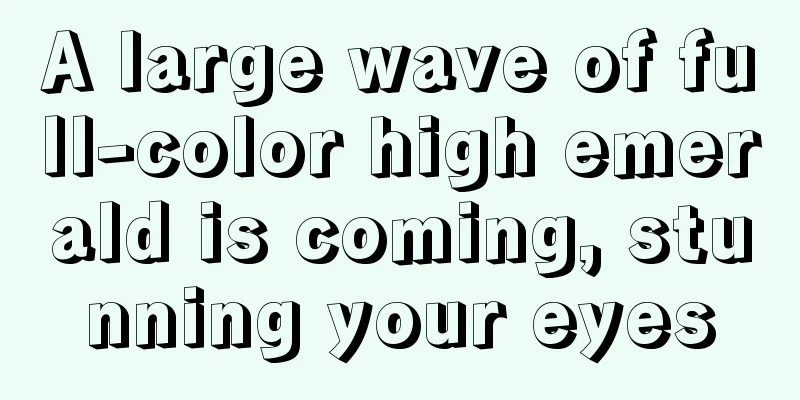Jade lovers should learn how to identify jade grading

|
The identification and grading of jade has always been a problem that has troubled jade lovers. For those who do not have a deep understanding of jade, it is difficult to tell the authenticity of jade, let alone distinguish the authenticity of jade with the naked eye. You can identify jade with the naked eye! Is this true? Jade grading: look at the luster of jade Why can experts tell whether jade is real or fake just by taking a look at it? Here we need to look at the gloss. Looking at the luster is just like looking at the "precious light" of an antique. This distinguishing feature is very useful for distinguishing between A and B grade jadeite. ①The luster of natural jadeite (commonly known as "A-grade" jadeite) is a typical glass luster, with a clear and moist feeling. ② The luster of bleached and filled jadeite (commonly known as "B-grade" jadeite) is worse, often with a wrong or even resinous luster and is relatively dull. ③ Techniques for observing gloss: Shake the jadeite back and forth and left and right when observing, and feel the intensity and uniformity of the jadeite's reflection through the reflected light from the surface. Jadeite grading: second look at the jadeite's smoothness Jade has a fine structure and high hardness, and its surface is very smooth after polishing. For example, if you compare a jade ring face with a green chalcedony (Australian jade) ring face, the jade ring face feels very smooth, while the green chalcedony ring face is relatively astringent and sticky. Jadeite grading: three aspects to look at: the internal structure of jadeite Structural jade has a fibrous interlaced structure, which is composed of countless tiny jadeite crystals interlaced together, and star-shaped and line-shaped light can be seen. Among them, the granular fibrous interlaced structure is composed of a mixture of fibrous and granular jadeite. In addition to star-shaped and linear light, flake-like light can also be seen. The granular structure is composed of coarser crystallized jadeite particles, and it is easy to see the jadeite nature, and it is mainly flake-like light. The structure of fake jade is loose, the boundaries of crystal grains are unclear, and it does not have the clear porphyroblastic unequal grain structure of natural jade. Jadeite grading: four aspects: look at the color of jadeite The color of jade, especially green, appears in various shapes such as dots, veins, filaments, patches, etc. and is accompanied by color roots. This is one of the useful characteristics for identifying jadeite. Even on a ring face with full color, the color distribution in different areas is uneven (uniform color is very rare). If the color distribution is uniform everywhere, the color is dull and has no spirit, it can basically be determined to be C-grade jadeite. fcgc66 fcpf18 |
Recommend
Jade pendants are everywhere? These "three beauties" will change your view of it!
Jade is the king of jade and is very precious. Hi...
Is it true that the thicker the jade is, the better?
When purchasing jadeite, we usually do not recomm...
How much do you know about the rules of jade trading?
We all know that jadeite is the king of jade, and...
The production and processing process of jadeite, from jadeite raw stone to finished product
Although jade has the highest market value, it is...
Can you identify jadeite? Teach you three little tips, it’s worth reading!
We have all kinds of knowledge about Nanhong jade...
How many surprises will you discover if you use an anthropomorphic approach to understand jadeite?
We often say that jade is a man’s best friend and...
Beautiful colors and clever carvings! The icy red jadeite carving is stunning and so beautiful!
This work is made from an old pit ice jadeite, wh...
This is the real value ranking of the jade industry
There is a saying in the jade industry: "One...
The jadeite raw stone looks like a "purple sweet potato", and the finished product is a violet egg-shaped surface!
Today I bring you a special piece of jadeite roug...
How to choose the ideal jade ring face? Here comes the “key point”!
Although the ring face is small, it is the most b...
Jade leaves have many beautiful meanings. Let's take a look at its eight meanings.
From ancient times to the present, after years of...
It is said that "the type of bracelet should be judged", so how should you choose a pendant?
It is said that "the quality of a bracelet i...
What is the meaning of jade peaches?
The Jade Peach is a jade carving with peach as it...
Each piece of jade carving has a different meaning! Friends, how many of you know about it?
Jade has been considered auspicious since ancient...
Jade bracelet production process
Jade bracelets are so beautiful, but how are they...









